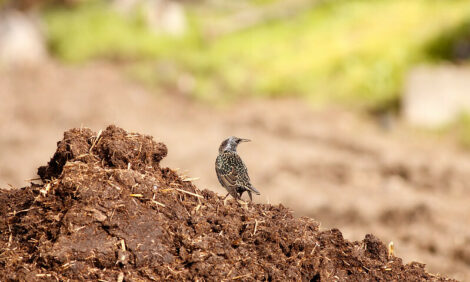



Reduction in use of medically important antibiotics sold for chicken production, says FDA
USA - Last week, the Food and Drug Administration (FDA) announced that domestic sales and distribution of all medically important antimicrobials intended for use in food-producing animals decreased by 33 percent between years 2016 and 2017The 2017 Summary Report on Antimicrobials Sold or Distributed for Use in Food-Producing Animals also shows that domestic sales and distribution of all medically important antimicrobials decreased 43 percent since 2015 (peak year of sales/distribution) and decreased 28 percent since the first year of reported sales in 2009.
Specifically for chicken, of the 2017 domestic sales and distribution of medically important antimicrobials approved for use in food-producing animals, only an estimated 5 percent was intended for chickens.
Chicken also saw a 47 percent decrease in estimated sales of medically important antimicrobials between 2016 and 2017. This data reflect the first full year of implementation of FDA Guidances #209 and #213.
"We all have a role to play in preserving the effectiveness of antibiotics, both in humans and animals," noted Ashley Peterson, PhD, NCC senior vice president of scientific and regulatory affairs.
"We’re proud to say that chicken producers have been leaders in proactively taking steps toward finding alternative ways to control disease while reducing antibiotic use, especially those important to human medicine.
"Although sales data does not have a direct impact on human health or antimicrobial resistance, this new data reflects a significant reduction in sales and distribution of medically important antibiotics across animal agriculture.
"Regardless of production practice, the health of our birds is the top priority and we support stewardship and responsible antibiotic use when necessary to treat and prevent disease under the prescription of a licensed veterinarian."
The summary report presents the sales and distribution data for the 2017 calendar year for actively marketed antimicrobial drugs approved for use in food-producing animals by drug class, medical importance, route of administration, indication, and dispensing status, as well as species-specific estimates of these sales and distribution.
The 2017 Summary Report is the first report to include data submitted after the full implementation of Guidance for Industry (GFI) #213. Based on recommendations in GFI #213, all production uses (eg, growth promotion, feed efficiency) of medically important antimicrobials in the feed or drinking water of food-producing animals were eliminated, and such drugs can now only be used for therapeutic purposes under veterinary oversight.
According to the report, of the 2017 domestic sales and distribution of medically important antimicrobials approved for use in food-producing animals:
- Tetracyclines accounted for 64 percent, penicillins for 12 percent, macrolides for 8 percent, sulfas for 5 percent, aminoglycosides for 5 percent, lincosamides for 3 percent, and cephalosporins and fluoroquinolones each for less than 1 percent.
- An estimated 42 percent was intended for use in cattle, an estimated 36 percent intended for use in swine, an estimated 12 percent intended for use in turkeys, an estimated 5 percent intended for use in chickens, and an estimated 5 percent intended for use in other species/unknown.
- An estimated 80 percent of cephalosporins, 72 percent of sulfas, 48 percent of aminoglycocides, and 44 percent of tetracyclines were intended for use in cattle. An estimated 84 percent of lincosamides and 40 percent of macrolides were intended for use in swine. An estimated 61 percent of penicillins were intended for use in turkeys.
Also according to the report, domestic sales and distribution of medically important antimicrobials approved for use in food-producing animals:
- Decreased by 33 percent from 2016 through 2017
- Decreased by 43 percent from 2015 (the year of peak sales) through 2017
- Decreased by 28 percent from 2009 (the first year of reported sales) through 2017
- Tetracyclines, which represent the largest volume of these domestic sales (3,535,701 kg in 2017), decreased by 40 percent from 2016 through 2017








